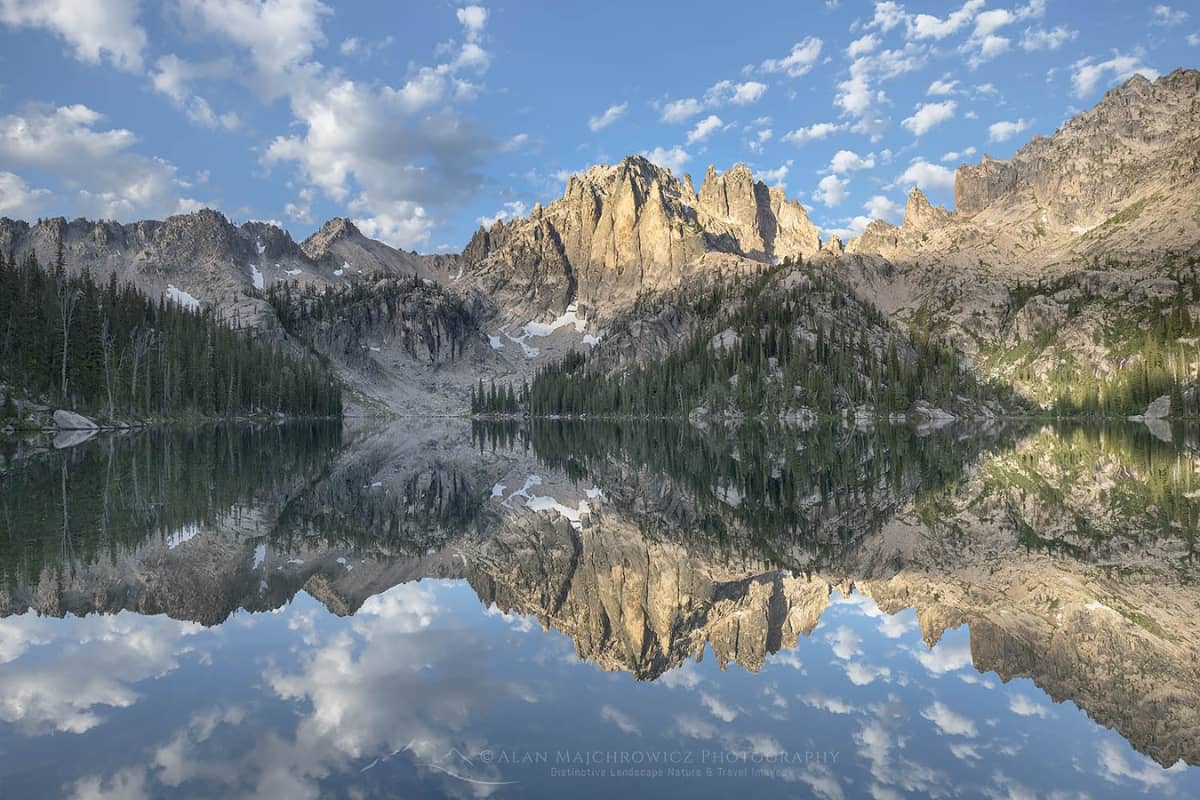The Baron Lake Trail in the Sawtooth Wilderness of Idaho is a stunning trek for those seeking alpine beauty. The journey offers breathtaking views of jagged peaks, serene lakes, and a sense of remote adventure. Yet, beneath the beauty lie hidden dangers that can catch unprepared hikers off guard. Here’s a comprehensive guide to six key risks of the Baron Lake Trail and how to prepare for them.
1. Steep Terrain and Challenging Switchbacks
One of the most daunting aspects of the Baron Lake Trail is its steep terrain, particularly around Baron Pass. This section includes numerous switchbacks that pose a significant challenge. Hikers gain around 1,700 feet in elevation over a relatively short distance, requiring endurance and careful navigation. On the descent to the lakes, the steep drop and rocky paths demand caution to prevent slips or falls. For those not acclimated to high elevations or steep climbs, these segments can become quite strenuous. Trekking poles can help maintain balance, while sturdy boots are essential for protecting ankles on rocky paths.
2. Limited Water Sources on the Trail
While the Baron Lake Trail is adjacent to Baron Creek for a portion of the hike, access to water is not always guaranteed. Many sections of the trail, especially during the steep climb up the switchbacks, do not provide easy access to fresh water. It’s vital to fill up water containers at the trailhead or near accessible creek points early on, as it may be miles before the next opportunity. Dehydration is a serious risk, particularly during hot summer days when the sun can beat down on exposed areas. A lightweight water filter or purification tablets are recommended for safely refilling from creeks or lakes when available.
3. Unpredictable Weather Conditions
Weather in the Sawtooth Wilderness can change rapidly, even during the summer months. Hikers may start their journey under sunny skies, only to encounter sudden thunderstorms or cold winds at higher elevations. Exposure to these conditions can be dangerous, especially if unprepared. Hypothermia is a risk even in summer when temperatures drop at night or if hikers get caught in a rainstorm without proper rain gear. Packing layers, including a waterproof jacket and a thermal layer, can be the difference between a safe adventure and a perilous situation.
4. Wildlife Encounters: Bears and Beyond
The Baron Lake Trail is home to various wildlife, including black bears, deer, and other smaller animals. While sightings of wildlife can be a highlight for many, they also present risks. Bears, in particular, pose a significant danger if food is not stored properly. All scented items, including food, toothpaste, and even deodorant, should be secured in bear-proof canisters or hung away from sleeping areas to avoid attracting curious bears. It’s crucial to make noise while hiking in areas with limited visibility to avoid surprising a bear. Carrying bear spray and knowing how to use it effectively can also provide added safety.
5. Crowded Trails and Limited Campsites
Despite its remote setting, the Baron Lake Trail has grown in popularity, leading to crowded conditions during peak hiking seasons. Popular spots like Alpine Lake and Baron Lakes can become busy, limiting the availability of prime campsites. Competition for these spots can be frustrating, particularly if arriving later in the day. This crowding can also impact the sense of solitude many seek in the wilderness and can contribute to noise, impacting the overall experience. To mitigate this, planning to arrive at campsites earlier in the day and choosing less popular days for your trek, like mid-week, can help.
6. Exposure to Sun and Risk of Sunburn
Parts of the Baron Lake Trail are exposed, especially as you approach Baron Pass and beyond. The higher elevation and thinner atmosphere mean that the sun’s rays are more intense, increasing the risk of sunburn and heat-related illnesses like heatstroke. Without ample shade, hikers should come equipped with sun protection, such as hats, sunglasses, and high-SPF sunscreen. Staying hydrated is crucial, as the combination of altitude and sun can deplete energy quickly. Planning breaks in shaded areas when possible can provide relief during hot days.
Essential Tips for Safe Hiking on the Baron Lake Trail
To make the most of a trip to Baron Lake while staying safe, preparation is key. Here are some tips to help you navigate the challenges:
- Start Early: Begin your hike early in the morning to avoid the midday heat and secure a campsite before others arrive. This also provides more time to complete difficult sections before the afternoon sun or potential storms.
- Pack Light but Smart: Focus on bringing essential gear such as a lightweight tent, proper bear storage solutions, and clothing layers suitable for fluctuating temperatures. A well-packed bag ensures you’re prepared without being weighed down.
- Know Your Limits: The elevation gain and distance can be taxing, especially for those not used to high-altitude hiking. If necessary, break the hike into shorter segments and acclimate by staying near Redfish Lake for a night before attempting the full trail.
- Practice Leave No Trace: The Sawtooth Wilderness is a fragile environment, and the increase in visitors means a greater impact. Carry out all trash, use WAG bags for human waste, and camp on durable surfaces to minimize your footprint.
Final Thoughts
Hiking the Baron Lake Trail offers the opportunity to experience Idaho’s wild beauty and serene alpine lakes, but it requires respect for the trail’s challenges. Awareness of these hidden dangers ensures a safer and more enjoyable adventure. With the right preparations, hikers can focus on the stunning landscapes and unforgettable memories, rather than unexpected difficulties. Always remember: a well-prepared hike is a safe and satisfying one, allowing you to fully enjoy the rugged splendor of the Sawtooth Wilderness.
By understanding the hidden risks, planning accordingly, and respecting the natural environment, your hike to Baron Lake can be a rewarding journey through one of Idaho’s most iconic landscapes.






